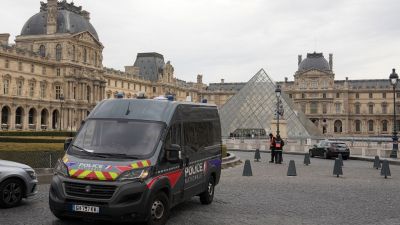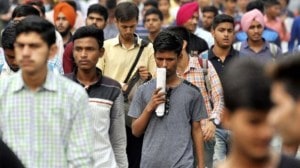Stay updated with the latest - Click here to follow us on Instagram
It’s tough to get things done in New York. Here’s why.
In the adjoining garbage bin lie other big development projects such as a football stadium on Manhattan’s West Side and smaller initiatives with potentially outsize impact, including all-door bus boarding.
 FILE – Brooklyn Bridge Park, in New York Moving the needle on big projects, like the park’s construction, requires a catalyst, a governing philosophy, a strategy and firm execution, said Dan Doctoroff, the city’s former deputy mayor under Michael Bloomberg. (Karsten Moran/The New York Times)
FILE – Brooklyn Bridge Park, in New York Moving the needle on big projects, like the park’s construction, requires a catalyst, a governing philosophy, a strategy and firm execution, said Dan Doctoroff, the city’s former deputy mayor under Michael Bloomberg. (Karsten Moran/The New York Times)With New York on the verge of becoming the first city in the nation to adopt congestion pricing, a sudden, familiar chill fell over the city last week, as another ambitious project was shelved.
This time, it was Gov. Kathy Hochul who consigned a big initiative to the dustbin, where it will molder alongside other abandoned and delayed big-ticket projects such as a subway to Staten Island, an AirTrain to LaGuardia Airport, a new Port Authority Bus Terminal, a new Pennsylvania Station, a reconstructed Brooklyn-Queens Expressway and a cross-Hudson River rail tunnel canceled by then-New Jersey Gov. Chris Christie.
In the adjoining garbage bin lie other big development projects such as a football stadium on Manhattan’s West Side and smaller initiatives with potentially outsize impact, including all-door bus boarding.
For a place where change is the rule and unbridled ambition the guiding light, New York can be a remarkably hard place to get things done.
“We’re the most change-oriented place in America on one level, and we’re also the most traditionalist on another level,” Bill de Blasio, a former New York mayor, said in an interview Monday. “It’s a very weird mix.”
New York City is nothing if not constantly in flux. Bodegas become illegal smoke shops. Neighborhoods identified with one group of immigrants become home to another. Disney supplants pornography in Times Square. Working-class outposts become havens for 20-somethings with trust funds.
And significant change does happen. The Bloomberg administration delivered bike lanes, pedestrian plazas and a new neighborhood at Hudson Yards. The de Blasio administration developed a citywide ferry system and created universal prekindergarten for 4-year-olds. Then-Gov. Andrew Cuomo turned a midtown post office into a train cathedral and helped transform one of the country’s worst airports into one of its best.
But even to make those happen, elected leaders had to overcome significant resistance.
New Yorkers who cling to the “Not in my backyard” stance are often a major obstacle, as well as a car culture that encourages the view that street parking is sacrosanct, and a political culture that often defers to motorists. The city also has some of the highest construction costs in the world, leading to ballooning estimates for infrastructure projects.
To actually move the needle requires four elements, according to Dan Doctoroff, former deputy mayor under Michael Bloomberg who counts the redevelopment of Hudson Yards and the creation of Brooklyn Bridge Park as among his accomplishments. First, there must be a catalyst, which could be strong leadership or cataclysmic events, such as 9/11. There must also be a governing philosophy, a strategy and firm execution.
“Everything is hard,” Doctoroff said. “But that’s true in government generally. If you have those four elements and you drive it hard, things can get done.”
Janette Sadik-Khan, who overcame heated opposition as transportation commissioner under Bloomberg to build a network of bike lanes and pedestrian plazas — including one in the middle of Times Square — said speed of delivery is also key, followed by ample time for New Yorkers to come around.
“If congestion pricing is given a chance to work and show the benefits for the millions of people who use the subway and Metro-North Railroad and New Jersey commuters whose commutes would improve with less traffic and more investments, we would get there,” Sadik-Khan said.
Data from cities that have implemented congestion pricing seems to bear out the argument that commuters get used to paying the charge and appreciate the ensuing benefits.
Congestion pricing, after all, was not merely meant to produce revenue. It was supposed to slash traffic, fund the subway and cut air pollution. The idea had been successful in other cities around the world, including London and Stockholm, and supporters hoped that its embrace in New York City would prompt other American cities to follow suit.
But Hochul astonished New Yorkers last week by abruptly reversing course and halting congestion pricing “indefinitely.” She cited concerns about the still-fragile state of New York’s post-pandemic economy and the struggles of working families.
“Let’s be real: A $15 charge may not seem like a lot to someone who has the means, but it can break the budget of a hardworking middle-class household,” Hochul said.
Hochul was also clearly worried about the politics before the November election. About 64% of New York City residents opposed congestion pricing, according to a poll by Siena College in April.
Kathryn Wylde, president of the Partnership for New York City, an influential business group that supports congestion pricing, said that its demise showed “the triumph of politics over substance.” She said elected officials should look past the next election to do what is best for the city, even if there is no immediate political payoff.
Steven Cohen, whose many titles in the Cuomo administration included secretary to the governor and vice chair of the Port Authority of New York and New Jersey, said that in a city overlaid with competing jurisdictional authorities, successful projects require empowered shepherds.
“It is much easier to get a large project done, like building an airport or building a bridge, when the governor says not just ‘I want to get it done,’ but ‘I’m taking the lead,’” he said.
Richard R. Buery Jr., who with Doctoroff chaired a prominent panel focused on the city’s future and spearheaded de Blasio’s prekindergarten initiative, said the city could do more big things, such as building more affordable housing, if it enacted “common-sense reforms,” such as eliminating the City Council tradition of deferring to local members on development projects in their districts.
“We are seeing more and more leaders step up and say we need more affordable housing, and it needs to happen everywhere, including in your community,” he said.
De Blasio, who took office in 2014, said it was also important for politicians to tackle big plans early in their tenures, or following a serious crisis, when they have sufficient political capital.
“It’s a reminder to me that if you want to get anything done, you sort of have those golden moments,” he said, noting Franklin D. Roosevelt’s famously effective use of his first 100 days in office to enact major change. “We got Pre-K for All done in 2014. I’m not sure we could have gotten this done in 2015.”
For Democratic governors, suburban votes in swing districts often overshadow reliably Democratic votes in big cities.
Arpit Gupta, a finance professor at New York University and a member of the city’s Rent Guidelines Board appointed by Mayor Eric Adams, said he hoped someone would challenge Hochul in the Democratic primary on an “urbanist plank” focused on housing, congestion pricing and transit.
“I’m not sure if it’s a majority winning coalition, but I’d like to see someone try,” he said, adding that elected officials needed to do a better job of communicating how congestion pricing would also improve drivers’ lives with fewer traffic jams.
Adams, a Democrat in his third year in office, supports several bold proposals that face an uncertain path, including new rules to build more homes to counter the housing shortage and efforts to move curbside trash into shared containers. But critics have also seized on his reluctance to build more bus and bike lanes and his scaling back of a popular outdoor dining program, disliked by some drivers because it curtails parking.
Adams has been lukewarm on congestion pricing, even though a half-dozen top officials in his administration and mayoral appointees to the Metropolitan Transportation Authority board voiced strong support, including his climate chief, health commissioner and the city’s first public realm officer. His top political adviser, Ingrid Lewis-Martin, does not ride the subway and said the program’s demise was as if “God answered my prayers.”
The plan would have required drivers to accept change. And amid the unceasing dynamism of New York City, New Yorkers can hold fast to the old standbys.
“We really value continuity where we can get it,” de Blasio said.
But he added, “The truth is: If congestion pricing were implemented tomorrow, life would go on. Some people would really change their habits, a lot of people wouldn’t. They would deal with it.”





- 01
- 02
- 03
- 04
- 05


























